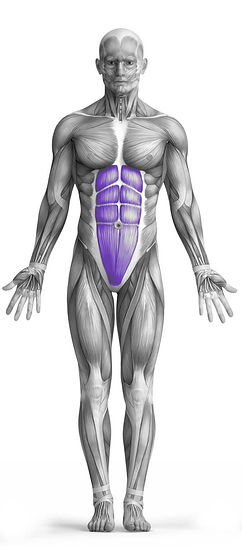Dragon Flag 101 Video Tutorial
0

Exercise Synopsis
Target Muscle Group
Abs
Secondary Targets
None
Execution
Compound
Force Type
Isometric
Required Equipment
Bodyweight
Fitness Level
Advanced
Variations
None
Alternatives
None
Timer
Hour
Minute
Second
Stopwatch
00:00:00:00
Overview
The Dragon Flag is an advanced bodyweight exercise that primarily targets the abdominal muscles, particularly the rectus abdominis and obliques. To perform this move, you lie on a bench or sturdy surface, gripping the edge for support, and raise your body into a vertical position while keeping your upper back and shoulders fixed. The key is to lower your body slowly and with control, keeping your core engaged to prevent sagging or swinging. This challenging exercise requires significant strength and stability, especially in the core, and helps build functional strength and endurance in the abdominal region. It is performed without any external equipment, relying solely on bodyweight.
How to Perform
Begin by lying flat on a bench, gripping the edge above your head with both hands to secure yourself.
Engage your core and focus on using your abdominal muscles as you initiate the movement. Visualize your belly button pulling your body upward, lifting your torso off the bench while keeping your upper back and shoulders anchored.
Lift your body to a 45-degree angle, maintaining a controlled motion throughout, and avoid using momentum.
Slowly reverse the movement, bringing your body back down to the starting position while keeping tension in your core to prevent sagging or swinging.
Repeat for the desired number of repetitions, ensuring each movement is deliberate and precise to maximize effectiveness and reduce the risk of injury.
★ Bonus: For exercises that involve external weights (such as dumbbells, barbells, or machines), the One Rep Max (1RM) calculator can help you estimate your maximum lifting capacity. Use it to track your strength progress and adjust your training for optimal results.
Tips
Begin by practicing foundational exercises like reverse crunches and lying leg raises to build the necessary core strength for the Dragon Flag. These exercises help activate the abdominal muscles and improve control.
If you're unable to complete a full Dragon Flag yet, focus on mastering the eccentric (lowering) portion of the movement. Start by lifting your legs until your hips are fully flexed, then extend your legs toward the ceiling, creating a straight line from your ankles to your shoulders.
Slowly lower your body back down to the starting position of the Dragon Flag, maintaining control throughout the descent. Repeat this motion for several reps to develop the strength needed for the full exercise.
Avoid gripping the bench too tightly with your arms, as this can place unnecessary stress on your neck and cervical spine.
Resist the temptation to overextend your body or allow your lower back to arch. This can compromise your form and reduce the effectiveness of the exercise.
Engage your glutes and abs to maintain a solid, straight line from your ankles through your shoulders. This alignment is crucial for targeting your core and preventing injury.
How Not to Perform
Avoid Using Momentum
Do not swing your body or use momentum to lift yourself. Focus on slow, controlled movements to target your abs effectively and prevent injury. Jerking or swinging can strain your lower back and shoulders.
Don’t Overextend Your Lower Back
Resist the urge to arch your lower back during the movement. Overextension can place unnecessary stress on your spine and reduce the focus on your core. Keep your lower back flat and engaged to maintain control.
Don’t Pull Too Hard with Your Arms
Avoid excessive pulling with your arms while gripping the bench. Pulling too hard can lead to tension in your cervical spine and reduce the emphasis on your abs. Keep your arms engaged but relaxed to avoid unnecessary strain.
Don’t Rush the Descent
Don’t drop your body too quickly during the lowering phase. The eccentric part of the movement is just as important as the lifting phase. Lower your body slowly and with control to build strength and prevent injury.
Avoid Letting Your Hips Sag
Ensure that your hips do not sag toward the bench during the movement. This will disengage your core and shift the effort away from your abs. Keep your hips in line with your body to maintain core activation.
Don’t Allow Your Legs to Bend
Do not bend your knees or legs while performing the Dragon Flag. Keeping your legs straight ensures the focus remains on your abs and helps prevent compensatory movements that reduce the exercise’s effectiveness.
Don’t Overuse Your Neck
Keep your neck neutral throughout the movement. Avoid looking up or tensing your neck excessively, as this can strain your cervical spine and distract from the target muscles in your core.
Don’t Forget to Engage Your Glutes and Core
Failing to engage your glutes and core muscles will cause your body to lose stability and proper alignment. Squeeze your glutes and tighten your core to create a straight line from your shoulders to your ankles, ensuring that your abs are doing most of the work.
Variations
Variations of fitness exercises refer to different ways of performing a specific exercise or movement to target various muscle groups, intensities, or goals. These variations aim to challenge the body differently, prevent plateaus, and cater to individuals with varying fitness levels.
Alternatives
Alternative exercises in fitness refer to different movements or activities that target similar muscle groups or serve the same training purpose as the primary exercise. These alternative exercises can be used as substitutes when the original exercise is unavailable or challenging to perform due to various reasons such as equipment limitations, injuries, or personal preferences.








